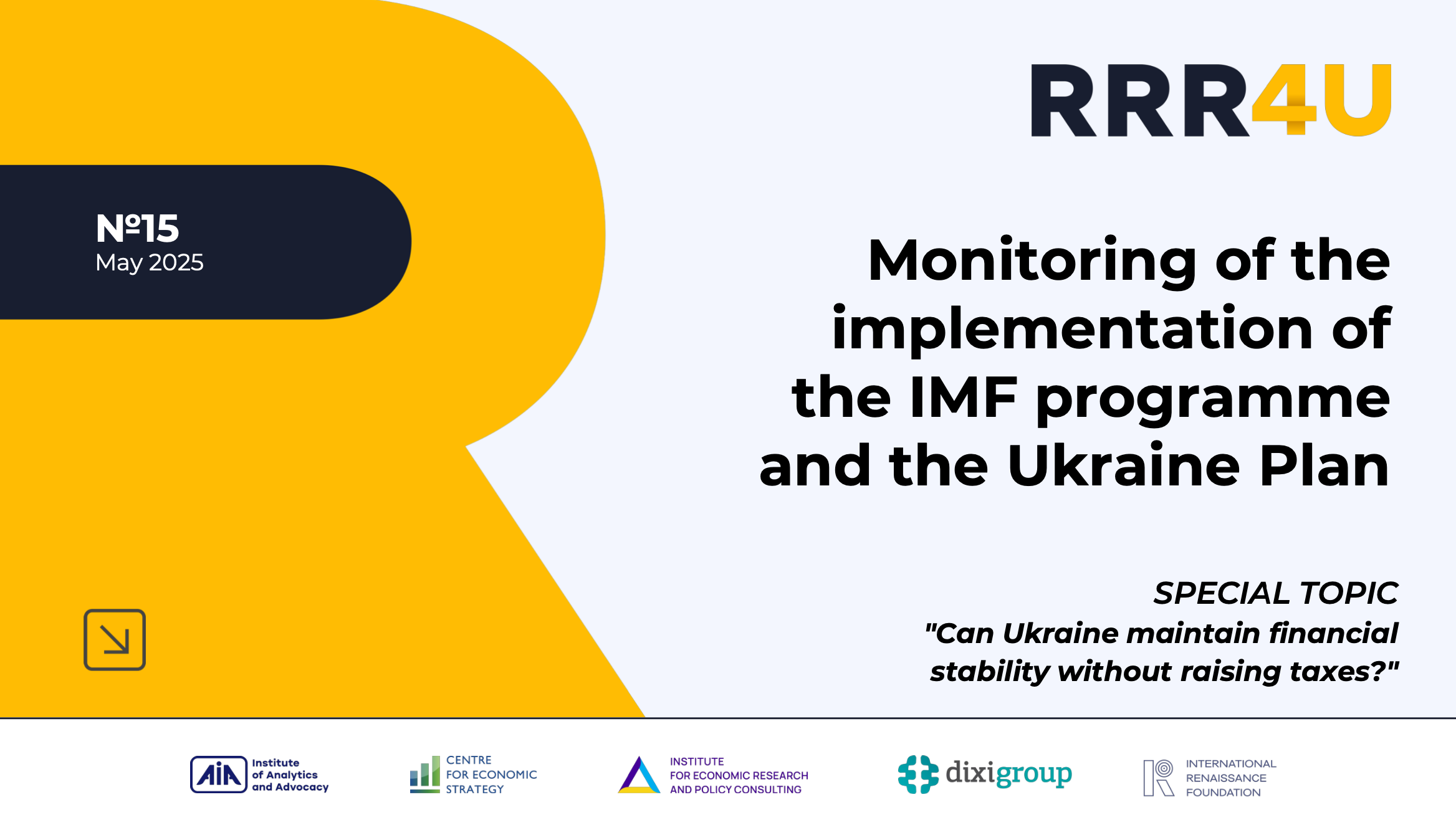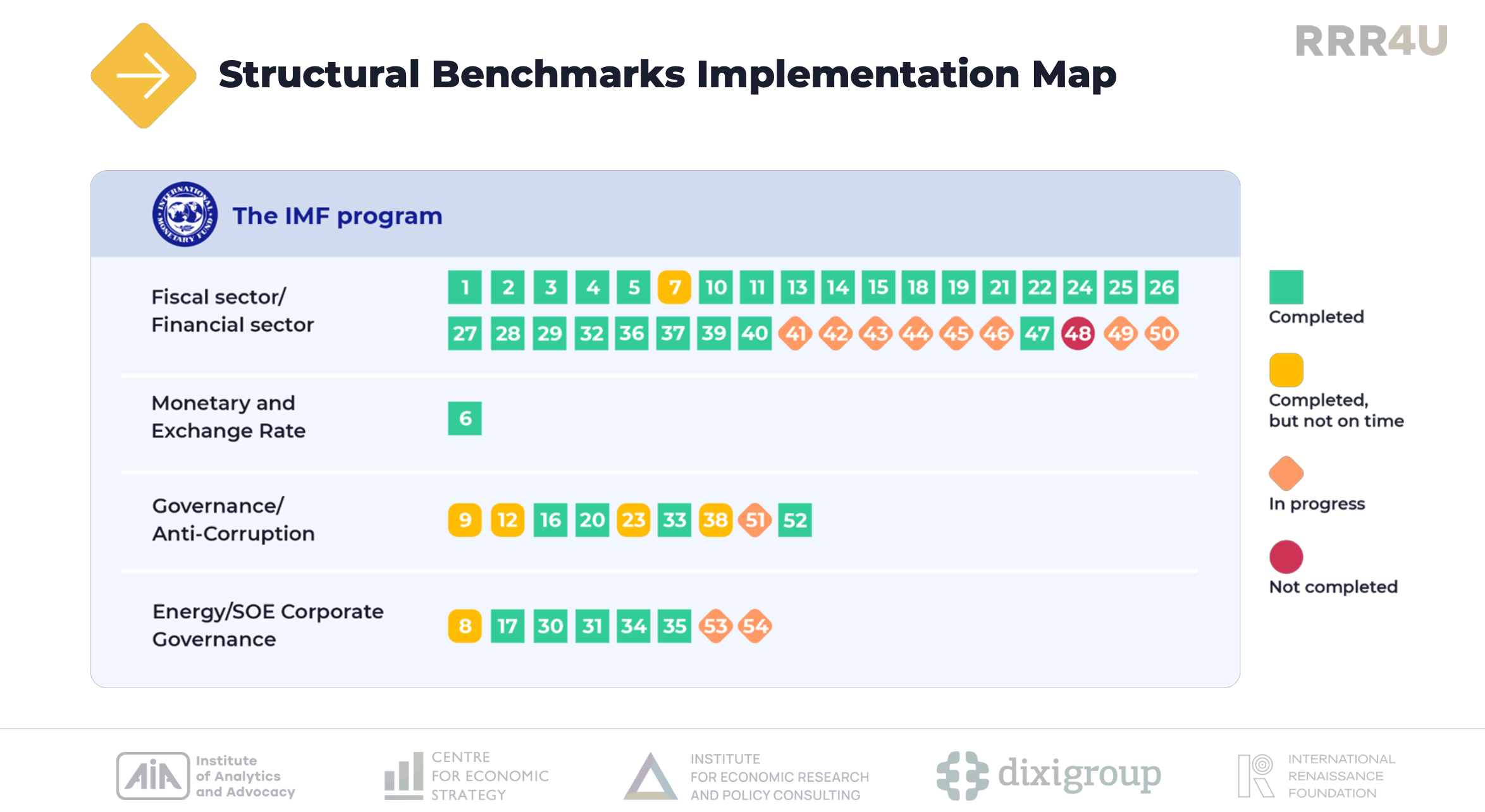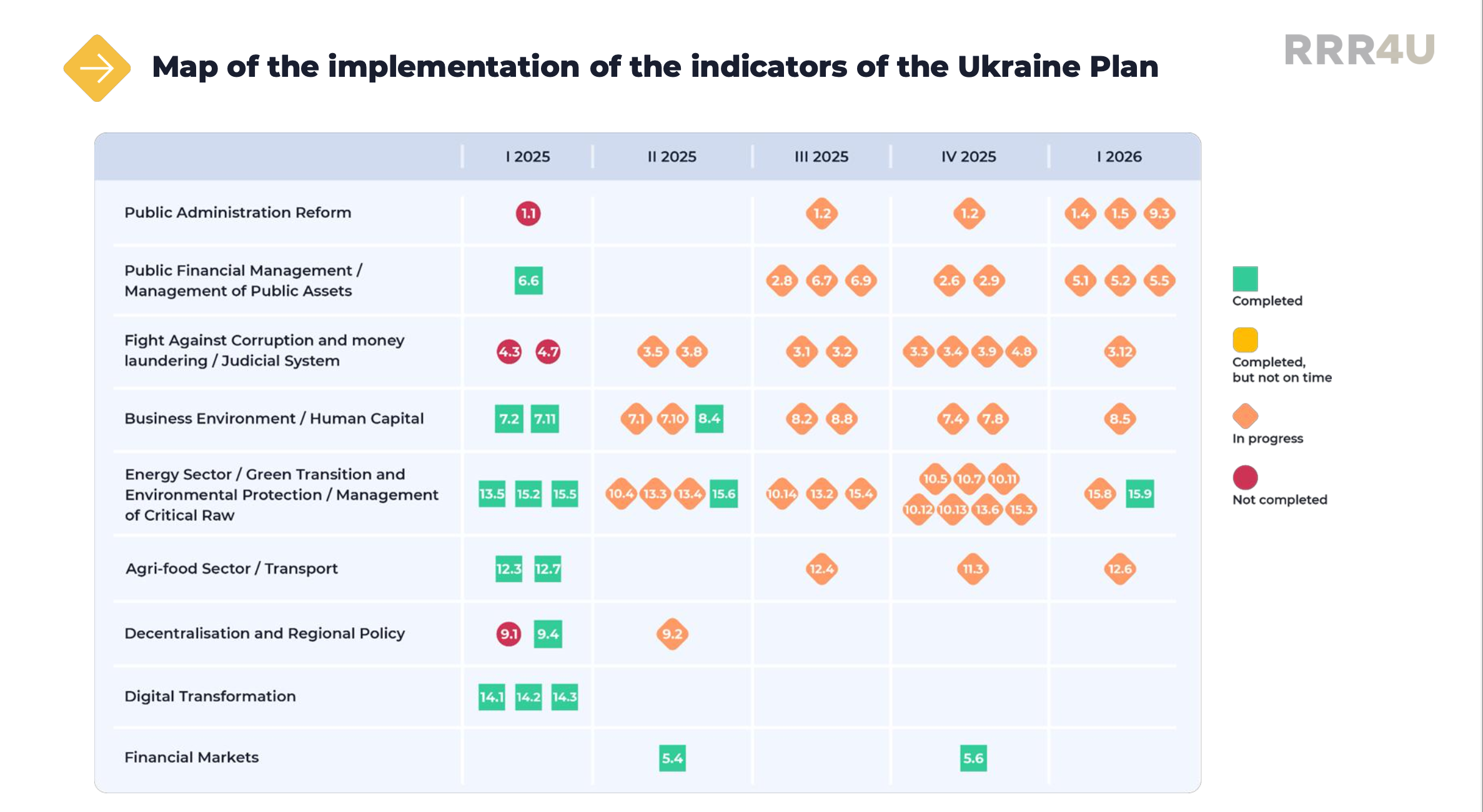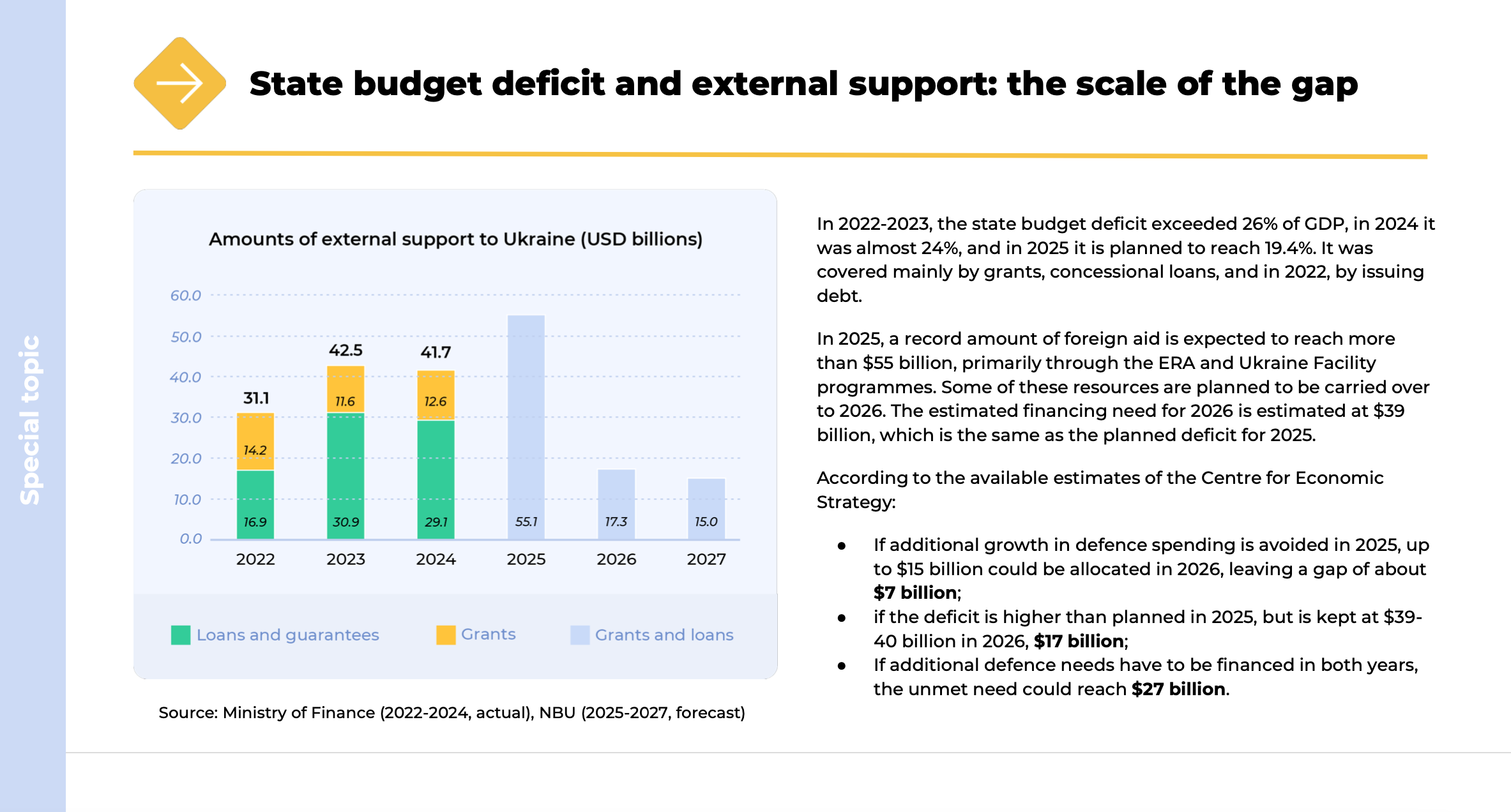
Successful cooperation with international partners is critical for Ukraine. It is crucial for the financing of priority state budget expenditures (domestic revenues are used for security and defence).
That is why the RRR4U consortium continues to regularly monitor Ukraine’s compliance with the IMF financing program and the implementation of the Ukraine Plan.
It is not the donors who need to fulfil their obligations under financial support programmes – Ukraine needs them to achieve economic sustainability and to move towards growth and improve the welfare of Ukrainians. It is also a way to gain the trust of all international partners and foreign businesses.
The IMF programme and the Ukraine Plan are not the only commitments that Ukraine has made to its external partners. But they remain important for coordinating and securing other international support.
There are still reforms needed to receive funds from the World Bank, as well as a broader reform agenda that Ukraine needs to achieve EU membership.
IMF
On May 20, 2025, the IMF mission for the eighth review of Ukraine’s Extended Fund Facility (EFF) programme began. The review will assess our progress against quantitative performance criteria and structural benchmarks as of the end of March 2025.
Ukraine has met all the benchmarks required for the successful completion of the eighth review of the programme.
In total, the IMF program provides up to USD 2.3 billion for 2025. This is based on the results of four reviews. The next review will take place in August.

These benchmarks will be evaluated during the next, ninth review scheduled for August:
- New tax reporting requirements for digital platform operators;
- Appoint a permanent head of the State Custom Service;
- Submit the Budget Declaration for 2026-2028 on time;
- Independent verification of compliance and integrity of the NSSMC
The IMF programme provides up to USD 2.3 billion for 2025. This is based on the results of four reviews. The first USD 400 million was disbursed to the state budget in March this year.
EU
The implementation of the Ukraine Plan is ongoing under the Ukraine Facility.
Ukraine has not yet reported on the implementation of the indicators of the Ukraine Plan for the 1st quarter of 2025. In contrast to the successful and timely implementation of the indicators for the 4th quarter of 2024, 4 indicators (including 3 legislative ones) have not yet been met. This means a risk of losing €1.96 billion of the expected €4.48 billion tranche.
After all, the methodology of partial payments approved by the European Commission stipulates that the “price” of an unfulfilled legislative step is the average “price” of an indicator multiplied by 2. The lag in the pace of implementation raises the issue of updating the Ukraine Plan – reviewing and updating the indicators while maintaining the ambitiousness of the reform agenda.



Status of implementation of Ukraine Facility:
- Ukraine has not yet reported to the European Commission on the implementation of the indicators of the Ukraine Plan for the 1st quarter of 2025: 4 indicators have not yet been fulfilled, but there is hope to make progress on at least two of them
- Thus, there is hope that the President will sign the draft law on remuneration of civil servants No. 8222, and that the law on ARMA will be adopted
- Since the European Commission has approved the methodology for partial payments under the Ukraine Plan, failure to meet 4 indicators could cost the budget more than €1.5 billion
- In the Q2 2025, Ukraine has to meet 11 indicators. So far, only three have been met.
By the end of March, Ukraine had to meet 16 Q1 2025 indicators, and as of the end of May, it had not met 4. Time for correction and implementation: 12 months from the date of the EU negative opinion.
Ukraine maintained macrofinancial stability thanks to external support.
Since 2022, despite a full-scale war, Ukraine has managed to avoid financial destabilisation and keep key macroeconomic indicators within controlled parameters. This was made possible by unprecedented external support, which included:
- grant funding to cover part of the deficit without increasing the debt burden;
- concessional loans with deferred repayments and low interest rates;
- military and humanitarian aid, which reduced the pressure on the expenditure side of the state budget.
This made it possible:
- timely finance all mandatory expenditures – defence, social, and pension;
- to maintain confidence in public finances by avoiding a loss of control over inflation and the exchange rate;
- avoid the need for equity financing from 2023
However, a sharp reduction in funding is likely from 2026. At the same time, the cost structure will remain stretched as the war continues. This poses a systemic risk to financial stability in the near term.



Challenges
In the context of the ongoing war and high uncertainty, no single solution can have a sustainable effect on closing the fiscal gap. A clear and balanced budget stabilisation strategy is needed, taking into account the limited fiscal space and the needs of the economy.
A comprehensive solution should include both:
- mobilising resources through the de-shadowing of the economy;
- optimising tax benefits while minimising fiscal losses and distortions;
- cutting non-priority expenditures;
- avoiding additional fiscal burden on bona fide taxpayers who already form the basis of tax revenues.
At the same time, political agreement on a new framework for external support needs to be reached. Ukraine should act systematically, fulfilling its commitments and offering its partners constructive formats for long-term cooperation.
You can view the previous monitors on the website RRR4U
The monitoring was prepared with the support of the International Renaissance Foundation.
RRR4U (Resilience, Reconstruction and Relief for Ukraine) is a consortium of four Ukrainian civil society organisations: Centre for Economic Strategy, Institute for Economic Research and Policy Consulting, Institute of Analytics and Advocacy and DiXi Group.
